
Why Do We Notice More Pins and Needles Sensations During Physical Activity?
Introduction
In the world of fitness, we often celebrate the rush of endorphins and the sweet burn of a good workout. But what about the prickly, tingling sensation that sometimes accompanies our exercise routines, commonly known as “pins and needles”? This curious phenomenon can feel both alarming and perplexing, often leaving us to wonder if we’re simply out of shape or if something more sinister is at play.
During physical activity, your muscles work hard, requiring increased blood flow and oxygen. When we push ourselves, certain positions can temporarily disrupt nerve signals, leading to those infamous prickling feelings. It’s like your body is sending you a text message: “Hey, remember me?”
But why do these sensations seem to spike when we’re sweating it out? A variety of factors contribute to this phenomenon. The first culprit is nerve compression. Oh yes, those innocent-looking squats can put pressure on nerves, especially if you’re in a position that’s not quite right. If you’ve ever crossed your legs during a long run, you might have felt that sudden jolt of tingling when you finally uncrossed them.
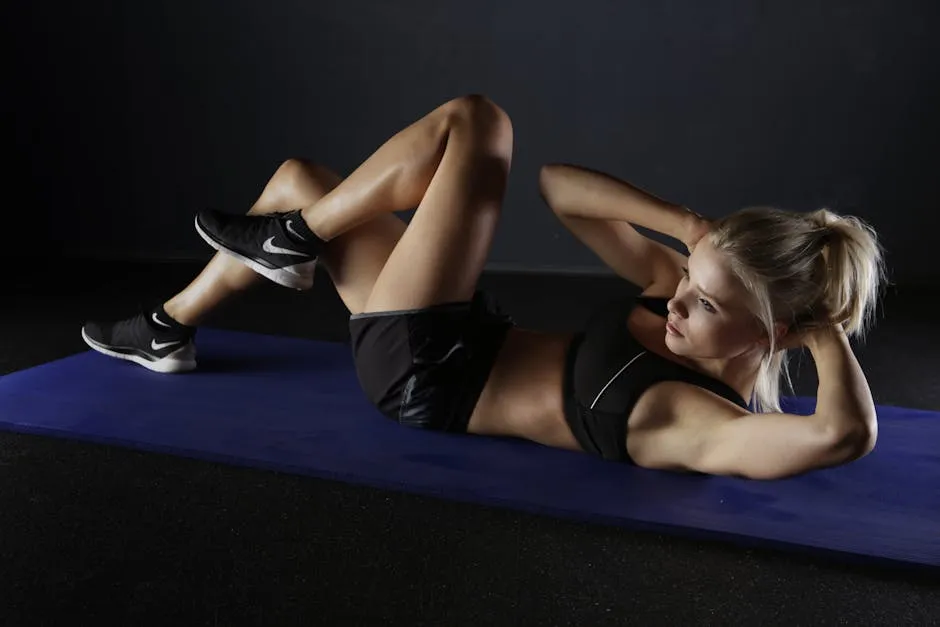
If you’re serious about your fitness journey, consider investing in a pair of compression socks. They can enhance blood circulation during workouts and help reduce the likelihood of those pesky sensations. Plus, your legs will thank you after a long run!
Another reason? Blood flow, or lack thereof. Intense physical activity can redirect blood flow away from certain areas, resulting in those prickly feelings. Think about it: your body prioritizes sending blood to working muscles. If you’re not careful with your form, you might end up sacrificing circulation to your nerves.
Lastly, let’s not forget about exceeding your range of motion. We’ve all been there: trying to lift that weight just a bit higher or stretch a little further than usual. Unfortunately, this might lead to straining muscles and nerves, causing those infamous pins and needles.
Understanding the science behind these sensations can empower you to adjust your form and routines. So, let’s unravel this mystery of paresthesia in a way that’s both informative and engaging. After all, knowledge is power, especially when it comes to your fitness journey! Curious about the specifics? Let’s dig deeper into this topic.
Summary
The experience of “pins and needles” during exercise is more common than one might think. This tingling sensation occurs due to several factors, including nerve compression, reduced blood flow, and exceeding the range of motion during various movements. As we push our bodies, certain positions can temporarily disrupt nerve signals, leading to the infamous prickling feeling. Additionally, intense physical activity can redirect blood flow, further impacting nerve function. While this sensation is often benign and resolves quickly, it can also signal underlying issues that warrant attention. Understanding these sensations can not only enhance our workout experience but also guide us in avoiding potential injuries. Curious about the specifics? Let’s dig deeper into the science behind why our bodies react this way during exercise and how we can manage these sensations effectively.

Understanding Pins and Needles
What Are Pins and Needles?
Pins and needles, scientifically known as paresthesia, is that peculiar tingling, prickling, or numb sensation often felt in our limbs. Ever sat cross-legged too long? If so, you’ve likely experienced this quirky feeling as your leg starts to “wake up.” Paresthesia typically occurs when nerves are under pressure, halting their ability to send signals effectively. The sensation is usually harmless and fleeting, resolving when you shift positions and restore normal blood flow.
Commonly affected areas include:
- Hands: Think about when you hold a phone too tightly or lean on your arm.
- Feet: Ever felt that delightful tingle after standing up from a long sit?
- Arms and Legs: These limbs are frequent flyers for this sensation, especially during workouts or prolonged rests.
While often benign, persistent pins and needles may hint at underlying issues. So, if you frequently feel like your limb has fallen asleep, it’s a good idea to investigate further.

Common Causes During Exercise
Nerve Compression
Let’s face it: some exercise positions are like playing a game of Twister with your nerves. When you squat, lunge, or even sit poorly, you can inadvertently compress a nerve. This pressure disrupts nerve signals, leading to that pesky tingling sensation. For instance, crossing your legs during a run can lead to a surprising wake-up call for your foot when you finally uncross it.
To combat nerve compression, consider adding a foam roller to your recovery routine. It’s a fantastic tool for releasing tension in your muscles and improving circulation, which can help prevent those annoying sensations.
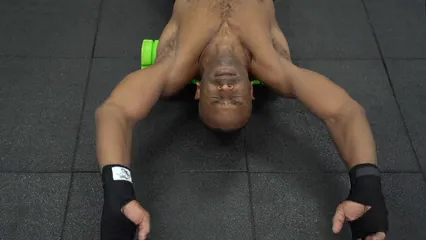
Reduced Blood Flow
During intense physical activity, your body directs blood flow toward working muscles. This is great for your biceps but not so much for your nerves. As blood vessels constrict or redirect, certain areas may experience reduced blood supply. This lack of nourishment can manifest as pins and needles. So, when you feel that tingling mid-sprint, your body is essentially saying, “Excuse me, can I get some blood over here?”
To keep your blood flowing, stay hydrated with a water bottle with infuser. Infusing your water with fruits or herbs not only makes hydration more enjoyable but encourages you to drink more!

Exceeding Range of Motion
Improper form can lead to exceeding your range of motion during exercise. Picture this: You’re attempting a shoulder press, but your elbows are doing a strange dance behind your back. This awkward positioning can strain muscles and nerves, causing tingling sensations. It’s a gentle reminder from your body to get back in line and maintain proper alignment.
Understanding these causes can help you better manage and prevent those quirky pins and needles during your workouts. Being aware of your body’s signals is key to enhancing your exercise experience. So, the next time you feel that familiar tingle, remember: it’s just your nerves trying to get your attention!
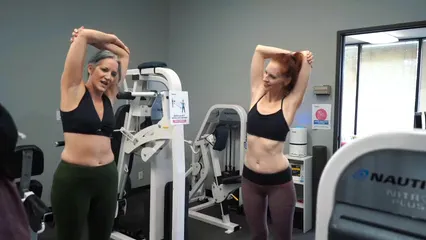
Managing Pins and Needles Sensations
Prevention Strategies
Proper warm-up and cool-down routines are essential. Think of them as a friendly nudge to your muscles and nerves, preparing them for the workout ahead. A good warm-up increases blood flow. It ensures the nerves are ready for action. Stretching improves flexibility and reduces the risk of compression.
Here are some tips to adjust your exercise form to avoid compression. First, maintain proper posture during workouts. This means keeping your back straight and shoulders relaxed. When performing exercises like squats or lunges, ensure your body is aligned. Avoid crossing your legs or holding awkward positions for too long.
Also, pay attention to your grip during weightlifting. A vice-like grip can compress nerves in the hands and arms. Try to keep a relaxed hold. Lastly, choose appropriate footwear. Tight shoes can restrict blood flow and contribute to those pesky sensations. If you’re looking for a solid choice, check out these athletic shoes that provide great support and comfort!
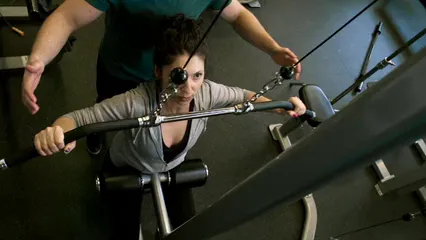
When to Seek Medical Advice
Now, not all pins and needles are created equal. Some signs may indicate an underlying health issue. If you frequently experience sensations that last longer than a few minutes, it’s time to take notice. Persistent numbness or tingling, especially if accompanied by weakness or pain, should not be ignored.
Specific symptoms warrant a visit to your healthcare professional. These include sensations that spread to other body parts, sudden loss of coordination, or difficulty walking. Remember, it’s always better to err on the side of caution. Consulting a healthcare professional can provide clarity and peace of mind.
Don’t wait for discomfort to become a constant companion. A proactive approach ensures the health of your nerves and overall well-being.

Expert Insights
Interviews with Health Professionals
We recently spoke with several physical therapists and sports medicine experts about managing those annoying pins and needles during exercise. According to Sam Wilson, a physical therapist, “Understanding the specific location and triggers of paresthesia can help tailor advice for patients.”
Farhad Tarapore, a health instructor, emphasized the importance of proper form. “Exceeding your range of motion can cause nerve pinching. Adjusting your technique is key,” he advised.
Michael J. Tran, a holistic health advocate, added that skin condition matters too. “Dry skin or rapid blood flow changes can explain the sensation during physical activity,” he noted.
Experts agree: paying attention to body positioning and form can make a world of difference. They recommend stretching, maintaining good hydration, and even keeping skin moisturized to reduce discomfort. You might even want to consider using an essential oil diffuser to create a calming environment while you recover!
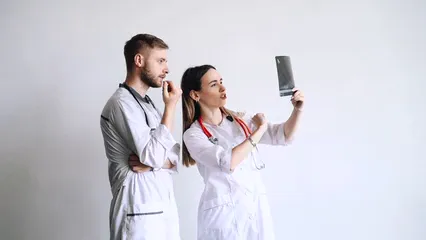
Case Studies
Meet Sarah, a dedicated runner who loves her daily jogs. One fateful morning, she experienced a wave of pins and needles during her run. At first, it felt like someone had sprinkled tiny pins over her legs. Concerned, she quickly slowed down. After a brief walk, the sensation vanished. Sarah learned that adjusting her running form could help prevent nerve compression. Now, she makes a point to stretch her legs pre-run and keep her posture in check.
Then there’s Mark, a weightlifter who noticed tingling in his fingers during heavy lifts. He was baffled; after all, he was strong! Upon consulting a trainer, Mark discovered that his grip was too tight on the barbell, compressing nerves in his forearms. A relaxed grip and periodic hand stretches during workouts turned his experience around. No more tingles, just gains!
Finally, let’s talk about Lisa, a yoga enthusiast who felt a familiar prickling sensation during downward dog. Initially, she dismissed it as normal. However, the tingling persisted, prompting her to seek advice. A yoga instructor pointed out that her positioning was affecting blood flow. By adjusting her stance and regularly incorporating wrist stretches, Lisa found relief. Now, she enjoys her practice without the pesky pins and needles. And if you’re into yoga too, you might want to invest in some yoga blocks to enhance your practice!

Conclusion
In conclusion, while the sensation of pins and needles during physical activity can be unsettling, it is often a temporary and manageable condition. Understanding the underlying causes is crucial. Nerve compression, reduced blood flow, and exceeding one’s range of motion can all contribute to this prickly phenomenon. It’s like your body’s way of saying, “Hey, pay attention to me!”
So, how can we enhance our workout experiences and minimize discomfort? Start by adopting preventive measures. Proper warm-ups and cool-downs are essential. They prepare your muscles and nerves for the workout, reducing the risk of compression. Additionally, paying attention to your form is paramount. A few tweaks—like maintaining good posture—can make all the difference.
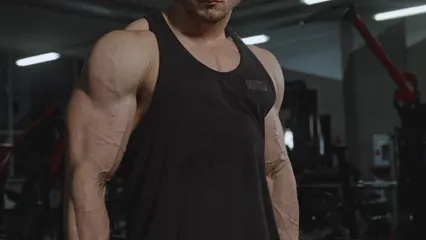
If these sensations persist or escalate, seeking professional advice is vital. It’s important to rule out any serious conditions that may be lurking beneath the surface. Remember, your body communicates with you, and listening to it is key to maintaining your health and enjoying your fitness journey.
In the end, the goal is to embrace a healthier workout routine. By staying mindful of your body’s signals, you can alleviate discomfort and focus on what really matters: achieving your fitness goals while feeling good doing it. So lace up those sneakers, hit the gym, and keep those pins and needles at bay!

FAQs
What should I do if I feel pins and needles during a workout?
If you experience pins and needles during exercise, don’t panic! First, try adjusting your position. Shifting your weight can help relieve nerve compression. Sometimes, gently shaking the affected limb can restore circulation. If it persists, consider taking a short break. Hydration is key, so drink water to support blood flow. Stretching might also help; it can relieve tension and improve nerve function. Pay attention to your body. If the sensation doesn’t subside, consult a healthcare professional for further evaluation.
Are pins and needles a sign of serious health issues?
In most cases, pins and needles are harmless and temporary. However, if the sensation becomes frequent or lasts for extended periods, it might be time to raise an eyebrow. Symptoms like persistent tingling, pain, or weakness could indicate underlying conditions such as nerve damage or circulatory issues. If you notice these signs or if the sensation spreads, don’t hesitate to seek medical advice. Better safe than sorry, right?
Can certain exercises increase the likelihood of pins and needles?
Absolutely! Certain exercises can lead to those pesky sensations. High-impact activities or heavy lifting can compress nerves, especially if you’re using improper form. For instance, weightlifting with a tight grip can pinch nerves in your hands. Similarly, prolonged cardio sessions might lead to numbness in your feet due to poor circulation. Be mindful of your body positioning. Adjusting your technique can help keep those tingles at bay.
How can I improve my exercise form to avoid this sensation?
Improving your form can significantly reduce the chances of experiencing pins and needles. Start by paying attention to your posture. Keep your back straight and shoulders relaxed during workouts. Focus on maintaining proper alignment, especially during strength training exercises. Avoid holding weights too tightly; a relaxed grip is essential. Also, be cautious with your range of motion. Stretch before and after workouts to enhance flexibility and prevent nerve compression. Regularly check in with your body during exercises to ensure you’re not overstretching or straining.
Is there a difference between temporary and chronic pins and needles?
Yes, there is a world of difference! Temporary pins and needles are often caused by pressure on nerves and usually resolve quickly. You might feel this after sitting in an odd position or exercising without proper form. Chronic pins and needles, however, last longer and may indicate more serious health issues. Conditions like diabetes, neuropathy, or multiple sclerosis can result in prolonged sensations. If you notice persistent or worsening symptoms, consulting a healthcare professional is a wise move. Remember, your body is trying to tell you something!
Please let us know what you think about our content by leaving a comment down below!
Thank you for reading till here 🙂
All images from Pexels




